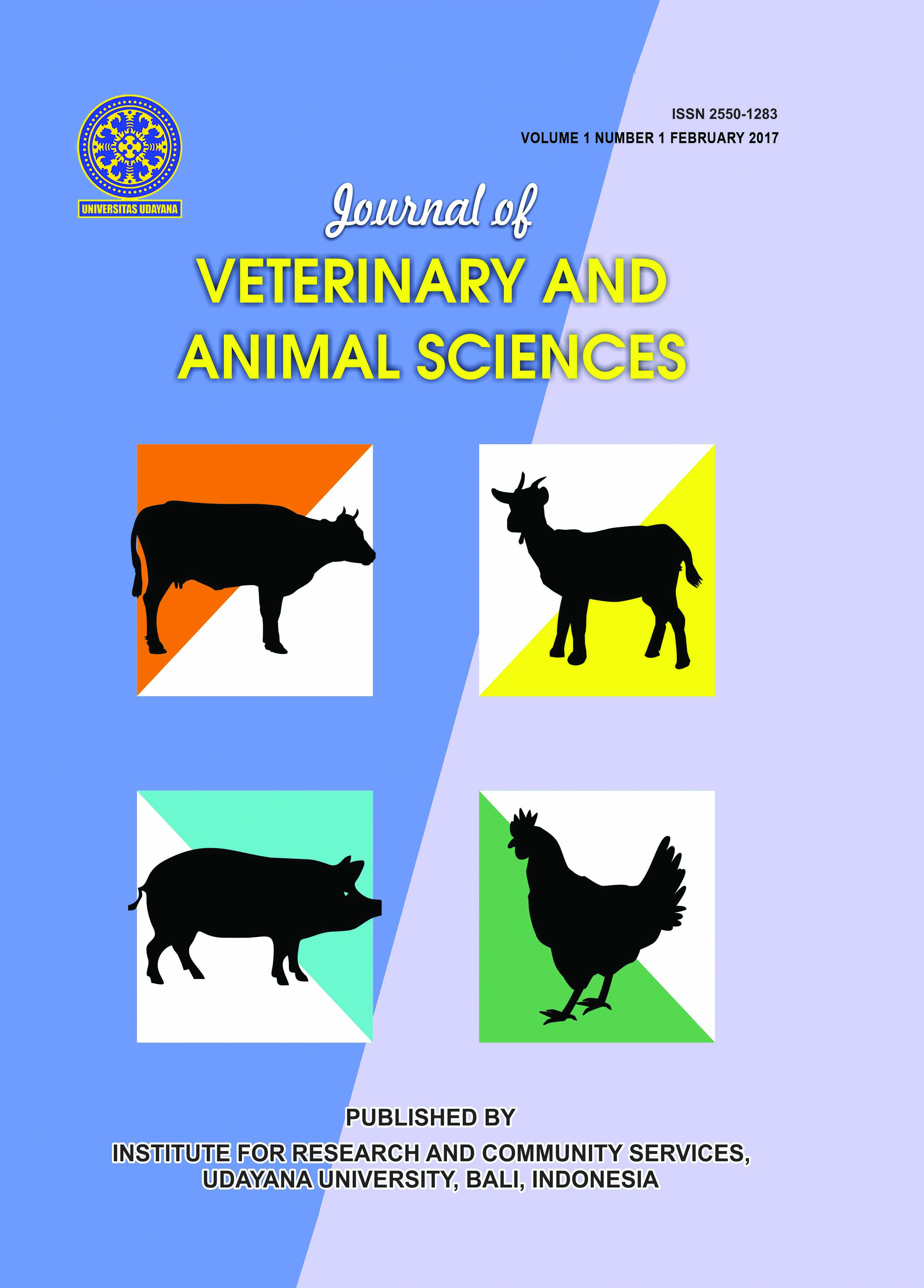Patological Changes in Liver and Gall Bladder Of Bali Cattle Infected by Fasciolosis
Abstract
Fascioliosis is a parasitic disease that infects ruminants and the disease is widely spread in the world. Fascioliosis caused by Fasciola hepatica and Fasciola gigantica that can cause macroscopic and microscopic lesions in the liver and gall bladder of bali cattle. Samples of bali cattle in Pesanggaran slaughter house that infected with fasciolosis were used in this study. The pathological macroscopic and microscopic changes of the liver and gall bladder were observed. The parasite found in the liver and gall bladder, thickening of bile duct mucous were observed on macroscopic examination. However, in microscopic observation found infiltration of inflammatory cells, fibrosis, necrosis, and degeneration of hepatocytes. In the gall bladder, necrosis was found in epithelial mucosal bile duct, infiltration of collagen fibers, inflammatory cells, hypertrophy and hyperplasia of the bladder epithelium were occurred.











